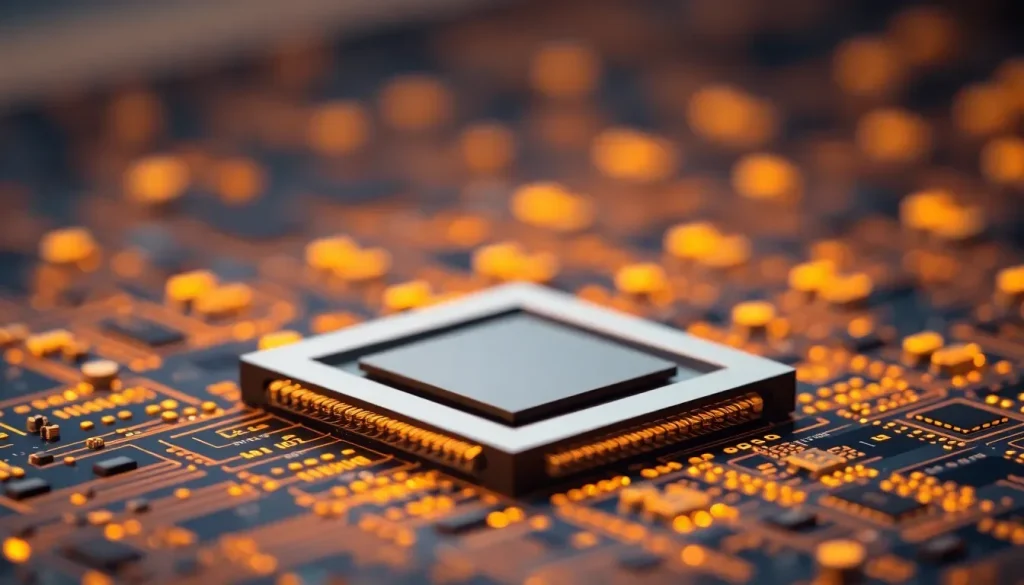AI Demand Impacting DDR5 Capacity and Wafer Supply Issues at MediaTek

The semiconductor industry is undergoing significant transformations, driven in large part by the soaring demand for artificial intelligence (AI) technologies. As companies race to harness AI's capabilities, the implications for memory technology, particularly high-bandwidth memory (HBM), are profound. The ripple effects of this demand are reshaping the landscape of chip manufacturing, supply chains, and ultimately, consumer products.
This article explores the impact of AI-related demand on the global semiconductor market, particularly focusing on how it affects the supply of DRAM, including DDR5, and the players involved, notably MediaTek and Qualcomm.
Impact of AI Demand on Semiconductor Supply Chains
The escalating need for high-performance memory solutions driven by AI applications is creating significant challenges within the semiconductor industry. HBM, known for its superior performance compared to traditional memory types, is increasingly prioritized for AI workloads. This shift is reshaping the market dynamics significantly.
As a result, several key factors are emerging:
- Increased Demand for HBM: The growing adoption of AI technologies necessitates faster and more efficient memory solutions. HBM's unique architecture offers the bandwidth required for AI processing tasks.
- Supply Constraints: The focus on HBM is squeezing the production capacity for other types of memory, especially DDR5, which is commonly used in smartphones and other consumer devices.
- Pressure on Foundry Capacity: The manufacturing processes for HBM and DRAM are inherently different, with HBM requiring larger die sizes. This increases competition for wafer foundry capacity.
Prolonged Delivery Times for DDR5 and LPDDR5x
According to reports from industry sources, the delivery times for LPDDR5x memory have extended significantly, now ranging between 26 and 39 weeks. Such delays mean that orders placed currently may not be fulfilled until mid-2026, which poses serious implications for manufacturers relying on timely component availability.
This protracted delivery period can be attributed to two main factors:
- Squeezed Production Capacity: The rising focus on HBM has led to a decrease in the available manufacturing capacity for DDR5, resulting in longer wait times.
- Larger Die Sizes for HBM: HBM die sizes are often 35-45% larger than those of comparable DRAM types, further complicating the production landscape and reducing overall capacity.
As a major player in the System on Chip (SoC) market, MediaTek finds itself particularly vulnerable to these shifts. The anticipated transition to a 2nm fabrication node poses additional challenges, especially given the rising costs associated with advanced manufacturing processes.
Recent benchmarks indicate that TSMC is charging upwards of $30,000 for a single 2nm wafer, exacerbating the financial pressure on companies like MediaTek. The implications of this are far-reaching:
- Gross Margin Pressure: MediaTek is expected to experience significant strain on its gross profits as manufacturing costs rise.
- Price Increases: To maintain profitability, MediaTek may have to consider increasing prices for its products.
- Limited Options: With Qualcomm and MediaTek having likely finalized their designs for 2026, switching to alternative foundries, like Samsung, may not be feasible.
Qualcomm's Relative Stability Amidst Rising Costs
While MediaTek faces considerable obstacles, Qualcomm's established market position may afford it greater resilience. As a company that already prices its products at a premium, Qualcomm might be better positioned to absorb the increased costs and navigate the current landscape.
Nonetheless, the challenges of accessing timely and affordable memory supply will affect all players in the market, regardless of their size or market strategy.
Impact on Smartphone OEMs and Consumer Prices
The effects of rising memory costs are not limited to chip manufacturers. Smartphone Original Equipment Manufacturers (OEMs), such as Xiaomi, are also feeling the pinch. The President of Xiaomi recently highlighted how increased memory chip costs are justifying hikes in smartphone prices, specifically for the Redmi K90 series.
This trend raises several important considerations for consumers and the industry:
- Consumer Impact: As manufacturers pass on the higher costs, consumers may face increased prices for smartphones and other devices.
- Market Competition: Companies that can effectively manage supply chain challenges may gain a competitive edge, while others could struggle to keep up.
- Long-Term Trends: The semiconductor landscape may undergo lasting changes as companies adapt to new demands and challenges.
For further insights into the evolving memory chip market and the implications for AI, the video titled "SK Hynix forecasts strong AI memory chip growth" offers valuable perspectives on these developments.
In conclusion, the interplay between AI demand, memory technology, and semiconductor manufacturing is creating a complex and rapidly evolving environment. As companies like MediaTek and Qualcomm navigate these challenges, the entire industry must adapt to ensure sustainability and growth in the face of unprecedented demand.




Leave a Reply